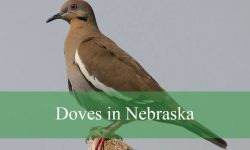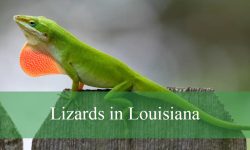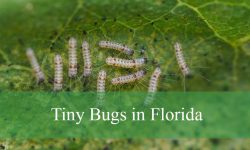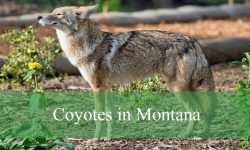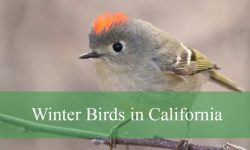Nevada, with its diverse landscapes ranging from arid deserts to mountainous regions, is home to a wide variety of wildlife. Among these animals, three skunk species stand out for their unique appearances and behaviors. These are the Striped Skunk (Mephitis mephitis), the Western Spotted Skunk (Spilogale gracilis), and the Hog-nosed Skunk (Conepatus leuconotus).
Each of these skunks has distinct physical traits, habits, and preferred habitats that allow them to thrive across Nevada’s varied environments. From the black-and-white stripes of the Striped Skunk to the spotted patterns of the Western Spotted Skunk and the distinctive nose of the Hog-nosed Skunk, their differences are fascinating to observe. Understanding these traits is valuable for nature enthusiasts, photographers, and anyone interested in safely spotting wildlife.
Skunks are often misunderstood due to their notorious defensive spray, yet they play a vital role in controlling insects and rodents. By learning how to identify each species and understanding their behavior, residents and visitors can better appreciate these nocturnal mammals while minimizing unwanted encounters.
Striped Skunk (Mephitis mephitis)

The Striped Skunk is the most commonly encountered skunk in Nevada. Its striking black fur with two broad white stripes running from the head to the tail makes it easily recognizable. Adults typically range from 19 to 37 inches in length, including a bushy tail that adds to their distinctive silhouette. Well-known for their highly developed scent glands, Striped Skunks are one of the most notorious animals for their defensive spray, which they use effectively to deter predators.
Identification
Identifying a Striped Skunk is relatively simple for anyone familiar with wildlife. The two white stripes usually run symmetrically from the forehead down the back, although some individuals may display slight variations in pattern. The face is mostly black with a central white stripe, and the tail is prominently bushy, often raised when the animal feels threatened. Small, rounded ears and short, sturdy legs contribute to the skunk’s stocky appearance, making it easy to distinguish from other Nevada mammals.
Habitat and Behavior
Striped Skunks are highly adaptable and occupy a variety of habitats throughout Nevada. They can be found in desert scrublands, grasslands, suburban areas, and near water sources. Nocturnal by nature, they forage under the cover of darkness for insects, small mammals, fruits, and vegetation. While their defensive spray is potent, these skunks usually avoid confrontation. When threatened, they often warn predators by stamping their feet, raising their tails, and hissing before resorting to spraying.
These skunks are also skilled at finding shelter and frequently use abandoned burrows, hollow logs, or spaces beneath porches as dens. Their adaptability allows them to coexist successfully with human developments, making encounters more common in suburban and rural neighborhoods. Observing a Striped Skunk from a safe distance provides a fascinating glimpse into their nocturnal lifestyle and ecological role.
Western Spotted Skunk (Spilogale gracilis)
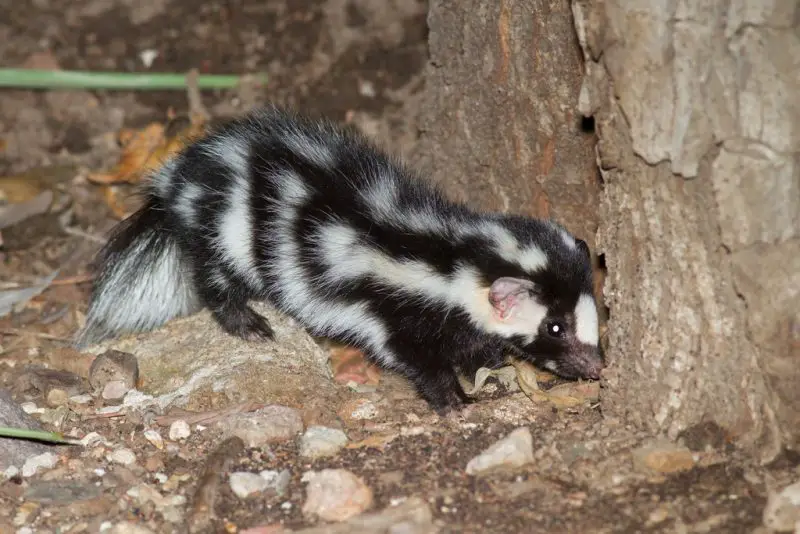
The Western Spotted Skunk is smaller and more agile than the Striped Skunk, making it one of Nevada’s most nimble nocturnal mammals. Adults typically measure 14 to 19 inches long, with a tail adding an additional 6 to 8 inches. Their sleek black coats feature striking white spots and broken stripes, giving them a unique and eye-catching appearance that clearly distinguishes them from the more common striped species.
Identification
The Western Spotted Skunk’s irregular pattern is its most defining feature. Unlike the solid stripes of the Striped Skunk, this species displays a series of broken stripes and spots along its body. The face often resembles a mask, with a combination of black and white markings that accentuate the eyes and snout. Its bushy tail has white tips that enhance visibility in low-light conditions, while the skunk’s smaller size and slender build make it highly agile. This agility allows it to climb fences, rocky surfaces, and even low trees with ease.
Habitat and Behavior
In Nevada, Western Spotted Skunks prefer habitats that provide ample cover, such as rocky hillsides, forests, and dense brush. They are primarily nocturnal and solitary, emerging at night to forage for insects, small birds, eggs, and fruits. Their small size and climbing ability enable them to access food sources and hiding spots that larger skunks cannot.
One of the Western Spotted Skunk’s most remarkable behaviors is its defensive posture. When threatened or during courtship displays, it can perform a distinctive handstand-like stance, raising its tail over its back to intimidate predators before spraying. This behavior serves both as a warning and as an effective deterrent, demonstrating the skunk’s adaptability and clever survival strategies in the wild.
Hog-nosed Skunk (Conepatus leuconotus)

The Hog-nosed Skunk, also known as the American Hog-nosed Skunk, is less common in Nevada and is primarily found in the state’s southern desert regions. It is larger and more robust than the Striped or Western Spotted Skunks, measuring 24 to 36 inches in length, with a thick, white-tipped tail. Its most distinctive feature is its elongated, pig-like nose, which it uses to dig efficiently for insects, roots, and other underground food sources.
Identification
Hog-nosed Skunks are mostly black, with solid white markings along the back and tail. Their long snout and powerful forelimbs make them easily distinguishable from Striped and Western Spotted Skunks. This species is generally slower in movement but compensates with a potent defensive spray and impressive digging abilities. Their heads are slightly triangular, and their stocky posture reflects their adaptations for foraging beneath the soil.
Habitat and Behavior
These skunks prefer arid, open habitats with loose soil that is easy to excavate. In Nevada, they are typically found in desert flats, scrublands, and canyon bottoms. Hog-nosed Skunks are nocturnal, emerging at night to feed on insects, small vertebrates, and plant material. Despite their relatively large size, they are solitary animals that usually avoid human activity.
Hog-nosed Skunks are important for the ecosystem, as their extensive digging helps aerate the soil and control insect populations. By uncovering beetles, grubs, and roots, they contribute to soil health and maintain a natural balance in their desert environment. Observing them from a safe distance offers a rare glimpse into one of Nevada’s lesser-known but ecologically significant mammals.
Skunk Safety Tips in Nevada
While skunks are generally non-aggressive, understanding how to safely interact—or avoid interactions—with them is essential, especially in suburban or rural areas. Never approach a skunk directly, particularly during the night when they are most active. If a skunk feels threatened, it may spray, which can cause temporary discomfort and lingering odor. Observers should maintain a safe distance and use binoculars or cameras to watch from afar. Additionally, securing trash bins and pet food can help prevent skunks from venturing into human-inhabited areas.
Interesting Facts About Skunks
Skunks are often misunderstood, but they are remarkable animals with unique adaptations. Their spray is a highly effective defense mechanism capable of reaching distances up to 10 feet. Despite its notoriety, skunks rarely use it unless provoked. Another fascinating aspect is their seasonal behavior: Striped and Western Spotted Skunks may enter a state of torpor during cold winters, reducing activity to conserve energy. Skunks also play a vital ecological role by controlling insect and rodent populations, which benefits crops and gardens across Nevada.
Skunks in Nevada’s Ecosystem
In Nevada, skunks are an important component of the ecosystem. They serve as both predator and prey. By feeding on insects, small rodents, and eggs, skunks help maintain ecological balance and prevent overpopulation of these species. Conversely, skunks are preyed upon by larger mammals such as coyotes, bobcats, and great horned owls, integrating them into the food web. Their digging behavior also contributes to soil health, aerating it and aiding in the distribution of seeds and nutrients.
Conclusion
Nevada’s skunks showcase the adaptability and diversity of wildlife in the state. The Striped Skunk, Western Spotted Skunk, and Hog-nosed Skunk each have unique traits that allow them to occupy different niches within the environment. Recognizing these species not only enriches the experience of exploring Nevada’s wild landscapes but also promotes safer coexistence with these fascinating mammals. Whether you are a hiker, photographer, or simply a curious observer, understanding skunk identification, behavior, and ecological importance provides valuable insight into the natural world of Nevada.
By learning about these nocturnal mammals, residents and visitors can appreciate their role in the ecosystem, respect their space, and enjoy the unique wildlife experiences that Nevada offers. From the iconic black-and-white stripes of the Striped Skunk to the agile Western Spotted Skunk and the robust Hog-nosed Skunk, Nevada’s skunks remain a captivating subject for wildlife enthusiasts of all ages.
Frequently Asked Questions About Skunks in Nevada
What are the main types of skunks found in Nevada?
Nevada is home to three prominent skunk species: the Striped Skunk (Mephitis mephitis), the Western Spotted Skunk (Spilogale gracilis), and the Hog-nosed Skunk (Conepatus leuconotus). Each species has distinct physical traits, behaviors, and habitats that allow them to adapt to the state’s diverse environments.
How can I identify a Striped Skunk?
The Striped Skunk is easily identified by its black fur with two broad white stripes running from the head to the tail. It has a bushy tail, small rounded ears, and short legs, giving it a stocky appearance. The stripes are usually symmetrical, and the tail is often held upright when the animal feels threatened.
What makes the Western Spotted Skunk different from other skunks?
The Western Spotted Skunk is smaller and more agile than other skunks. It has a unique pattern of broken white stripes and spots on a black coat. Its mask-like face markings and bushy white-tipped tail are distinguishing features. This skunk is an excellent climber, capable of scaling fences and rocky surfaces, which sets it apart from the Striped and Hog-nosed Skunks.
Where is the Hog-nosed Skunk found in Nevada?
Hog-nosed Skunks are less common and are primarily found in southern desert regions of Nevada. They prefer arid, open areas with loose soil suitable for digging. These skunks are nocturnal foragers, often inhabiting desert flats, scrublands, and canyon bottoms.
Are skunks dangerous to humans?
Skunks are generally not aggressive and will avoid confrontation when possible. Their main defense is a strong-smelling spray, which they use when threatened. Skunks can carry diseases like rabies, so it is important to observe them from a safe distance and avoid handling them.
What do skunks eat in Nevada?
Skunks are omnivorous and primarily feed on insects, small mammals, fruits, and plant material. Hog-nosed Skunks use their elongated snouts to dig for beetles, grubs, and roots. Striped and Western Spotted Skunks forage at night for a wide variety of food sources, helping control insect and rodent populations.
How can I safely observe skunks?
To safely observe skunks, keep a distance and avoid cornering them. Use binoculars or a camera with a zoom lens for a closer view. Remove food sources like pet food or trash from your yard to reduce encounters, and never attempt to handle a wild skunk, even if it appears calm.
Why are skunks important to Nevada’s ecosystem?
Skunks play a vital role in controlling insect and rodent populations, which helps maintain ecological balance. Their digging behavior also aerates soil, spreads seeds, and promotes healthy plant growth. By performing these roles, skunks contribute to the overall health of Nevada’s desert and grassland ecosystems.

